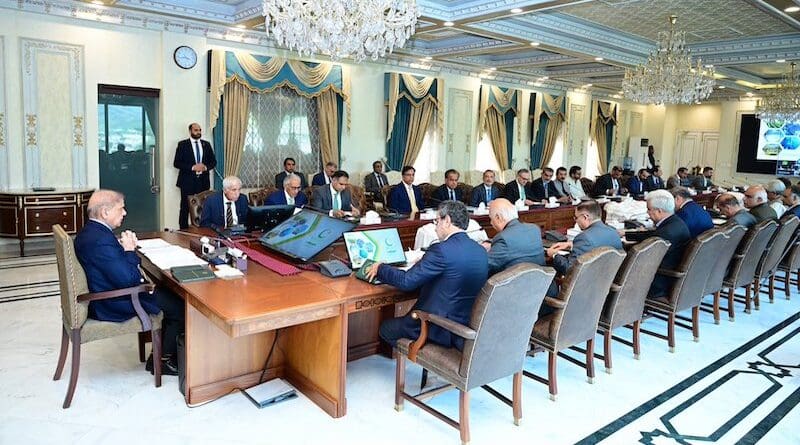Pakistan: SIFC’s Blueprint For The Next Decade – OpEd
By Dr. Sahibzada Muhammad Usman
The Special Investment Facilitation Council (SIFC) has unveiled an ambitious blueprint aimed at reshaping Pakistan’s investment landscape over the next decade. This comprehensive plan focuses on bolstering economic growth, enhancing competitiveness, and attracting both domestic and international investors by addressing current challenges and leveraging emerging opportunities.
At the heart of the SIFC’s blueprint is a vision to transform Pakistan into a prime destination for investment in South Asia. Recognizing the critical role of investment in driving economic growth, job creation, and technological advancement, the council has outlined a multi-faceted approach. This approach includes regulatory reforms, infrastructure development, sectoral focus, and the creation of a conducive environment for business and innovation.
One of the foundational pillars of the SIFC’s blueprint is the emphasis on regulatory reforms aimed at improving the ease of doing business in Pakistan. Acknowledging that bureaucratic hurdles and complex regulatory frameworks can deter investors, the council proposes a comprehensive review and simplification of existing regulations. Key initiatives include the digitization of regulatory processes, a one-window operation for business registrations and approvals, and the establishment of fast-track dispute resolution mechanisms. By streamlining administrative procedures, the SIFC aims to significantly reduce the time and cost associated with business operations in Pakistan.
Recognizing the critical role of infrastructure in facilitating investment, the SIFC’s blueprint prioritizes the development of modern, efficient, and sustainable infrastructure. This includes the expansion of transportation networks, such as roads, railways, and ports, to enhance connectivity within the country and with regional trading partners. Additionally, the plan emphasizes the importance of upgrading energy infrastructure to ensure reliable and affordable power supply, a key concern for industrial and commercial activities. Investments in digital infrastructure, particularly broadband connectivity, and data centers, are also highlighted to support the growth of the digital economy and e-commerce.
The blueprint identifies several key sectors for targeted investment, including agriculture, manufacturing, information technology (IT), and renewable energy. By leveraging Pakistan’s comparative advantages, such as its large agricultural base, young workforce, and renewable energy potential, the SIFC aims to diversify the economy and reduce dependence on traditional sectors. Special incentives, including tax breaks and subsidies, are proposed to attract investment in these priority sectors. Furthermore, the plan outlines measures to promote research and development (R&D), innovation, and technology transfer, particularly in high-growth industries like IT and biotechnology.
Creating a conducive environment for business and innovation is central to the SIFC’s blueprint. This entails not only regulatory and infrastructural improvements but also efforts to nurture a culture of entrepreneurship and innovation. Initiatives include the establishment of technology parks, incubators, and accelerators to support startups and SMEs. The blueprint also envisions enhancing collaboration between academia, industry, and government to spur innovation and skill development. Furthermore, the plan emphasizes the importance of strengthening intellectual property rights protection to encourage creative and innovative endeavors.
The blueprint recognizes the vital role of the Pakistani diaspora and international partners in achieving its investment goals. Efforts to engage these stakeholders include creating attractive investment opportunities for overseas Pakistanis and fostering partnerships with foreign governments, international financial institutions, and multinational corporations. The SIFC aims to leverage these relationships to facilitate technology transfer, attract foreign direct investment (FDI), and access global markets.
Implementing the SIFC’s blueprint will not be without challenges, including political stability, security concerns, and global economic uncertainties. However, the plan also presents significant opportunities for economic revitalization and sustainable development. By addressing longstanding barriers to investment and capitalizing on emerging trends, such as digitalization and green energy, Pakistan can position itself as a competitive player in the global economy.
The SIFC’s blueprint for the next decade represents a bold and forward-thinking strategy to unlock Pakistan’s investment potential. Through regulatory reforms, infrastructure development, sectoral focus, and fostering a conducive environment for business and innovation, the plan aims to catalyze economic growth and development. While challenges remain, the blueprint lays the foundation for a prosperous and dynamic investment climate in Pakistan. As the country embarks on this ambitious journey, collaboration among government, business, and civil society will be crucial to realizing the vision outlined in the SIFC’s blueprint.

